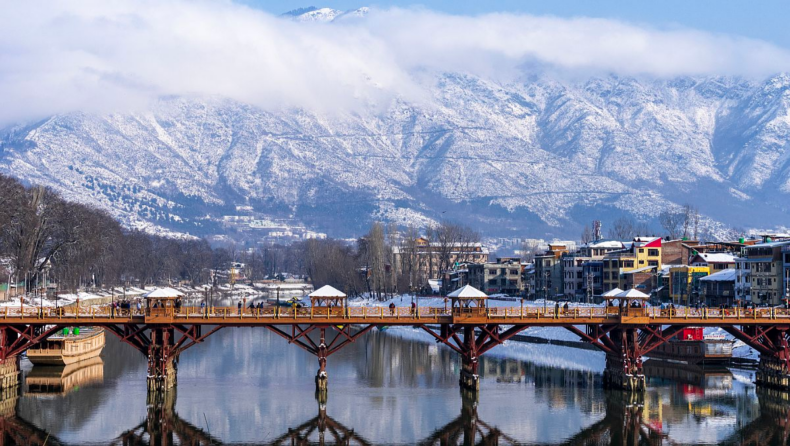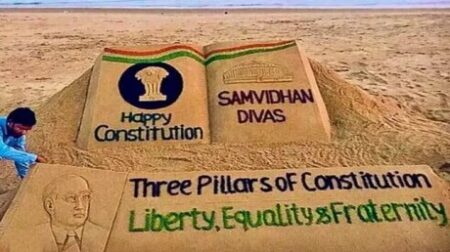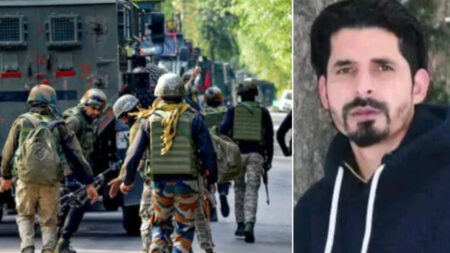The election commission yesterday published an official order for the delimitation process in the Union Territory of Jammu and Kashmir, according to which the UT will be divided into 90 constituencies.

The delimitation process in the Union territory of Jammu and Kashmir began yesterday. The Election Commission officers appointed to regulate the delimitation process in J & K have finalised the Delimitation Order.
The election commission team was headed by retired judge of the Supreme Court, Justice Ranjana Prakash Desai, as Chief Election Commissioner, Sh. Sushil Chandra, and State Election Commissioner of the Union Territory of J & K, Sh. KK Sharma. The Election Commission formed for the delimitation process published the official order yesterday.
Some of the highlights from the final Delimitation Order of Jammu and Kashmir

The Union Territory of Jammu and Kashmir is divided into 90 constituencies. Of these, 43 are a part of the Jammu region and 47 are a part of Kashmir. Within these, 9 assembly constituencies are reserved for STs. Meanwhile, 6 Assembly constituencies are reserved in Jammu and 3 are reserved in Kashmir.
Furthermore, the election commission has reserved 7 Assembly constituencies for SCs. However, it is worth noting that the constitution of the former state of Jammu and Kashmir did not have a reservation of seats for STs in the Legislative Assembly.
Based on various factors like the geographical features, means of communication, public convenience, and the proximity of the areas, the commission has broadly divided the districts. All the 20 districts are divided into 3 broad categories:
- Districts that have predominantly hilly and difficult areas,
- Districts with both hilly and flat terrain,
- Districts that have predominantly flat areas.
The commission has planned an additional constituency for some of the districts that are located in such geographical areas where communication is difficult. These constituencies include those that have poor connectivity, lack of public convenience, and inhospitable conditions due to the presence of international borders.
Furthermore, the commission states that Jammu and Kashmir will be treated as a single entity for delimitation. And the Patwar circle will be the lowest administrative unit in the Union Territory.
The election commission also stated that all constituent assemblies must stay within their respective districts.
Issues faced by the election commission while reframing the constituencies
The election commission, during the delimitation process of Jammu and Kashmir, faced various issues while redistributing the constituencies evenly. The geographic and cultural distinctiveness raised several issues while reframing the constituencies.
There are vast differences in population density between the districts. On one hand, the population density is 3436/sq. km in valleys and plains; on the other hand, the density is 29/sq. km in predominantly hilly areas.
Some of the sub-regions within districts remain completely cut-off during the winter months due to heavy snowfall.
Furthermore, in the areas near the border, there is total uncertainty of life, lack of connectivity, and even public convenience due to continuous firing and shelling.
The election commission restructuring the constituencies of Jammu and Kashmir has ensured the equitable and fair exercise of democratic rights by the citizens of the UT. In spite of the population living under inequitable conditions, the commission has made sure to uphold the democratic values cherished by the citizens of the largest democracy in the world.
Providing fair opportunity to Kashmiri migrants and displaced people from PoK
The commission interacted at the most primary level possible to draught the delimitation order. The team held public meetings in several districts and took people’s opinions into consideration.
Several requests from displaced people in Kashmir and areas of Pakistan-occupied Kashmir were received by the commission during the public hearing. The delegation from Kashmir presented before the commission that they were forced to leave their homes and live as refugees in their own country for the last 3 decades. The delegation requested the commission to safeguard their political rights as well and provide them with a reservation in the Jammu and Kashmir Assembly and Parliament.
Additionally, the migrants from PoK also urged the election commission to provide them with reservation in the constituencies as well. Thus, to protect their rights, the election commission proposed the following recommendations to the central government:
- At least two members from Kashmiri migrant families, one of whom must be a woman, must be elected to the legislative assembly. These members can have more power in parliament with the power of nominated members.
- The Central Government may consider providing the displaced people from PoK some representation in the Legislative Assembly, but by the way of nomination of representatives of the displaced persons from Pakistan-occupied Kashmir.
Published By – Chirag Agrawal
Edited By – Nehal Sharma













